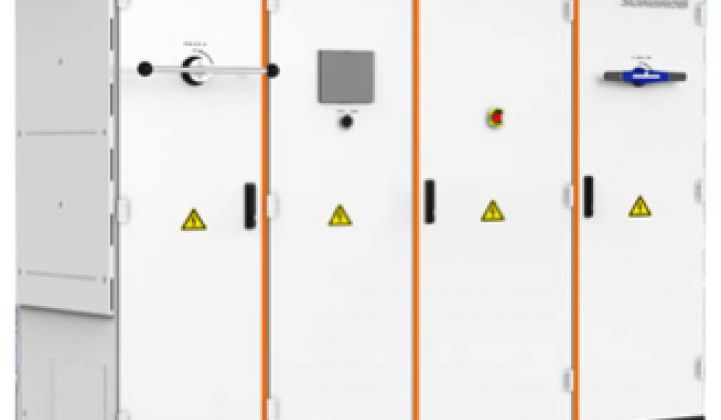The expiration of the federal Investment Tax Credit in December 2016 looms over the solar industry and makes the levelized cost of energy (LCOE) of a solar system even more important to developers.
In general, there are two ways to lower LCOE:
- Reduce installation and O&M costs
- Improve system performance
Lowering installation and O&M costs
The first generation of 1,000-volt DC 3-phase string inverters brought benefits to smaller non-residential projects, including the ability to make longer strings, save on copper, and lower balance-of-system costs.
Sungrow has deployed more than 10,000 3-phase commercial string inverters with features that lower LCOE, including silicon-carbide components that can nearly double the power density, as well as unique air flow and thermal management systems that allow the inverters to be mounted at an angle or horizontally.
Lowering the LCOE of small utility projects
Europe has been using 3-phase string inverters for utility projects for some time now. These devices make possible the benefits of string-level monitoring and improve ease of installation and O&M, especially in remote locations or locations with topography that may be not be suitable for cookie-cutter megawatt blocks. Additionally, string inverters have been shown to be price-competitive with the decreasing cost of central inverters for many small utility projects. The first utility string inverter is now on the market using a single maximum power point tracking (MPPT) unit, along with a built-in MC4 connector design that enables 2-in-1 junction, speeding installation and reducing parts and labor costs.
Lowering the LCOE of large utility projects
Large central inverters have been the engines of large utility projects for quite some time. With high labor costs and high degrees of complexity, having too many inverters results in too many potential points of failure. Fewer, simpler connections are key. Often, inverters are integrated onto skids or inside e-houses and wired up to medium-voltage transformers offsite to maintain high quality and reduce higher on-site labor costs. And as they’re often sited in remote locations, having minimal O&M requirements is ideal. In addition, with many large utility projects located in hot climates in the U.S., thermal performance matters. Turnkey, prefabricated and prewired 2-megawatt skid options with breaker-equipped recombiners, medium-voltage transformers and auxiliary equipment can also reduce on-site labor costs.
With more than 8 gigawatts' worth of inverters deployed in more than 50 countries since 1997, everything we’ve learned about design, quality control, real-world conditions, and maintenance considerations is embedded in our new central and string-inverter products.




